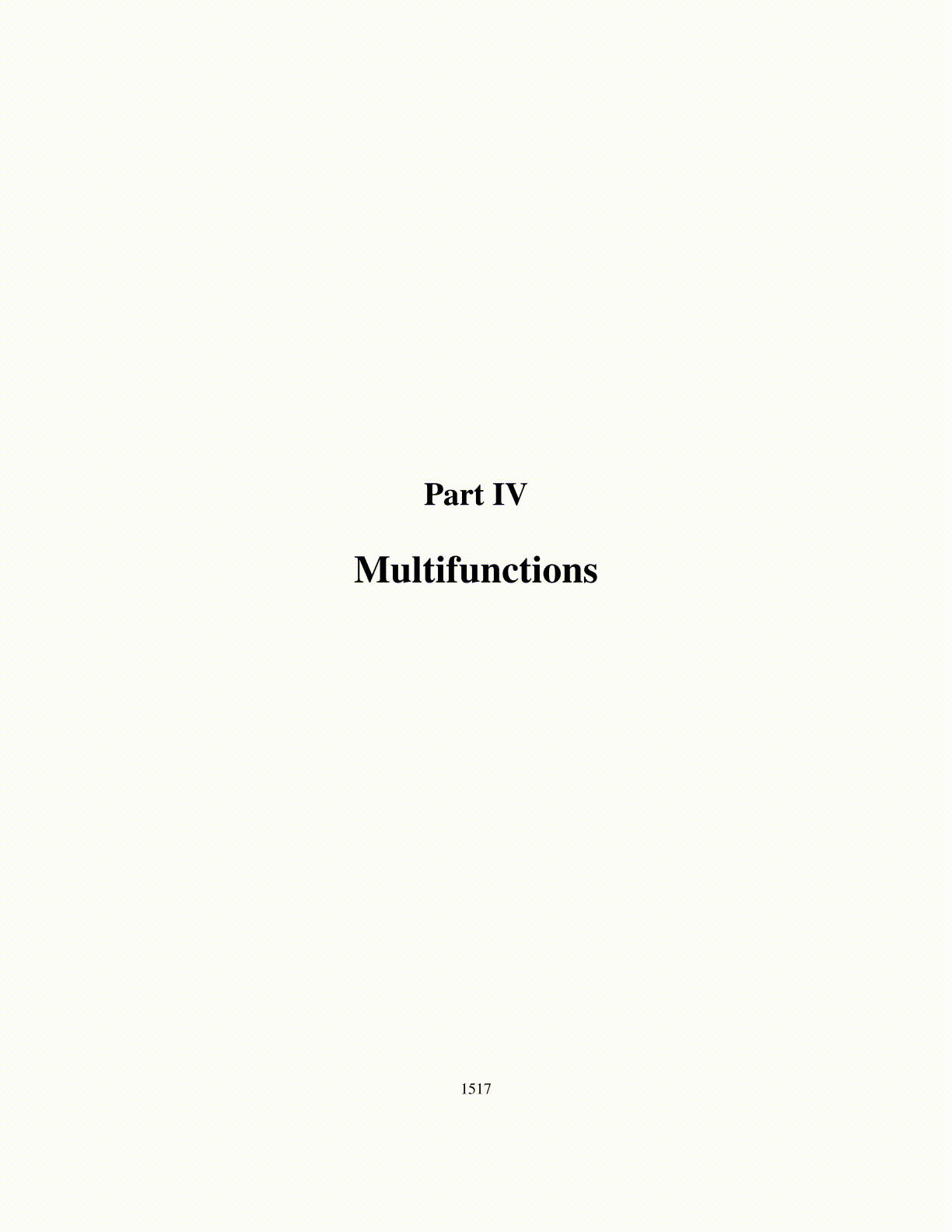
46.2. THE TRACE ON THE BOUNDARY OF AN OPEN SET 1517
≤Cl
∑i=1||(ψ iu)||m,p,Ω ≤C
l
∑i=1||u||m,p,Ω ≤Cl ||u||m,p,Ω .
Now use the density of C∞(Ω)
in W m,p (Ω) to see that γ extends to a continuous linear mapdefined on W m,p (Ω) still called γ such that for all u ∈W m,p (Ω) ,
||γu||m− 1p ,p,∂Ω
≤Cl ||u||m,p,Ω . (46.2.3)
Also, it can be shown that γ maps W m,p (Ω) onto W m− 1p (∂Ω) . Let g ∈W m− 1
p (∂Ω).By definition, this means
h∗i (ψ ig) ∈W m− 1p (Ui) , each i
and so, using a cutoff function, there exists wi ∈W m,p (Ui× Ii) such that
γwi = h∗i (ψ ig) = h∗i (γψ ig)
Thus(H−1
i
)∗wi ∈W mp (Ω∩Wi) . Let
w≡l
∑i=1
ψ i(H−1
i)∗
wi ∈W mp (Ω)
then
γw = ∑i
γψ jγ(H−1
i)∗
wi = ∑i
γψ j(H−1
i)∗
γwi
= ∑i
γψ j(H−1
i)∗h∗i (γψ ig) = g
In addition to this, in the case where m = 1, Lemma 45.2.1 implies there exists a linearmap, R, from W 1− 1
p ,p (∂Ω) to W 1,p (Ω) which has the property that γRg = g for every
g ∈W 1− 1p ,p (∂Ω) . I show this now. Letting g ∈W 1− 1
p ,p (∂Ω) ,
g =l
∑i=1
ψ ig.
Then also,h∗i (ψ ig) ∈W 1− 1
p ,p(Rn−1)
if extended to equal 0 off Ui. From Lemma 45.2.1, there exists an extension of this toW 1,p
(Rn+
), Rh∗i (ψ ig) . Without loss of generality, assume that
Rh∗i (ψ ig) ∈W 1,p (Ui× (ai,0)) .
If not so, multiply by a suitable cut off function in the definition of R . Then the extensionis
Rg =l
∑i=1
(H−1
i)∗
Rh∗i (ψ ig) .